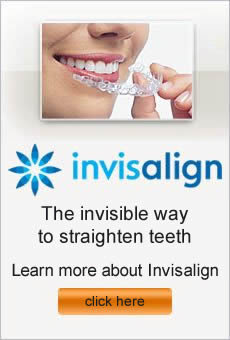Cleaning your teeth while wearing braces is one of the most important parts of the experience. If you don’t remove food particles and plaque buildup, you run the risk of tooth decay, staining, and bad breath. Follow these tips for keeping your mouth clean and sparkly.
1. Brush, brush, brush!! Make sure you focus on every single tooth, especially the places where your braces and teeth meet.
2. Clean every side of your teeth. Brush the fronts, backs, and chewing surfaces. Don’t forget your gum line because plaque likes to hide there.
3. Angle your brush. Brush the top teeth and braces with your toothbrush angled down, and brush the bottom teeth and braces with your toothbrush angled up. This gives the bristles access to the areas where food tends to get caught above and below your braces.
4. Brush after eating. No matter if it’s a full meal or a light snack, food can get trapped in your braces and lead to decay. The longer the food is there, the greater your risk of plaque formation. Brush after eating, or rinse your mouth with water if you can’t brush.
5. Be prepared. Bring toothbrush, toothpaste, and floss with you so that you can brush no matter where you are.
6. Use fluoride. Choose fluoride toothpaste and rinse with fluoride mouthwash, which will both help prevent cavities.
7. Remove the accessories. If you have headgear or elastic bands, take those off before brushing or flossing.
8. Consider options besides just dental floss. You may find it easier to use a floss threader, or Superfloss that is a combination of regular floss and threaders.
9. Get to the point. Cone-shaped brushes with pointy ends are designed to reach areas around your braces that toothbrushes can’t.
10. Don’t forget your dentist. Go for regular dental checkups to get professional, thorough cleanings.
Dr. Fotovat is an Orthodontist in Sherman Oaks, CA
Wearing braces on your teeth can be a hassle, so you certainly want to have both a beautiful smile and a healthy mouth at the end of your treatment. That means you must be diligent about taking care of your teeth while wearing braces, so that you don’t develop cavities in the process. If you are a braces patient, you should know the hazards that increase your risk for cavities, as well as how to avoid getting them.
Cavities
Cavities result when plaque accumulates on your teeth and gums. Acid from the plaque develops holes in your teeth, and these cavities start out small but can grow into big problems. Small cavities may go unnoticed, but as they progress it can cause pain and tooth sensitivity.
Higher risk
Braces do not cause cavities, but patients wearing braces are at higher risk for developing them. This is due to the increased amount of food that gets caught in your teeth and wires. When bacteria attacks the food debris, it causes plaque buildup and higher chances of cavity formation as well as gum disease.
Cavity free
Before beginning orthodontic treatment, see your dentist for a full examination of your mouth to make sure no cavities are present. If so, the cavities need to be treated prior to any orthodontic work. Once you are cavity-free, braces may be placed on your teeth.
Avoiding cavities
Here are some tips to avoid cavities while you wear braces:
• Brush after each meal and snacks.
• Floss every day, even though it can be tricky around wires. Use flossers or other tools your orthodontist suggests to help make flossing easier.
• Use a mouthwash to combat bacteria left in your mouth.
• Some patients like using oral irrigators like waterpik to cleanse their mouth and wash away food particles.
• Limit the amount of sugar you eat and drink because it increases your risks for tooth decay.
If you have been waiting your whole life to have your teeth straightened, there’s no reason to think it’s too late to have them corrected as an adult. The wait is over with Invisalign. Offering the same benefits as traditional braces as far as transforming your smile, Invisalign clear aligners also accomplish these goals without causing embarrassment or hassles. Let’s learn how Invisalign can benefit you.
Clear
The clear trays you wear during Invisalign treatment are barely visible to others. They are made of transparent plastic that allows your teeth to show as they normally would, instead of being covered with metal like traditional braces. You are able to smile and speak naturally, so others often don’t notice anything different about your teeth during treatment.
Removable
As opposed to metal brackets that are adhered to your teeth, Invisalign trays are removable. You can take them out of your mouth as you wish, making everyday activities like eating and playing sports simple and safe. You should wear the trays as much as possible to achieve the fastest straightening results, but it’s beneficial to have the option to remove them as needed.
No food limitations
There are no restrictions on the foods you can eat while undergoing Invisalign treatment. Culprits commonly known to endanger metal braces, such as popcorn and sticky candy, are acceptable for Invisalign patients because the trays will not break or become brittle.
Easy oral hygiene
Since the trays are removable, taking care of your teeth is the same as before Invisalign treatment. Simply remove the trays, perform your brushing and flossing routine, and then replace the trays when you are ready. There are no hassles of cleaning around metal brackets and wires, which is a common frustration with traditional braces.
Invisalign offers all of these benefits to you, while giving you the smile you’ve dreamed about. Consult Dr. Fotovat to find out how this teeth straightening method might help you.
One thing that can make you a pretty unpopular person is bad breath. People will avoid being around you if you emit a stinky odor every time you open your mouth. If you don’t want to fall victim to this embarrassing problem, try the following tactics.
Brush and floss
For many reasons, you should carefully brush your teeth at least twice a day. This includes brushing your tongue and gums, where bacteria tend to build up and lead to mouth odor. Flossing should be performed daily to help get rid of food debris and plaque.
Drink water
Having a dry mouth increases bad breath, so staying hydrated is an important way to avoid odor. It is recommended to drink thirteen cups of water each day, which may be difficult to accomplish but it is a good goal to keep in mind. You can also prevent dry mouth by limiting foods and drinks known to cause dehydration, like coffee, energy drinks, and anything high in sugar or caffeine.
Chew parsley
A natural remedy for decreasing odor, chewing parsley can be helpful for stinky breath. It contains chlorophyll, which is known to fight smells and freshen breath.
Brush with oils
Peppermint oil and tea tree oil are both known to decrease halitosis, or bad breath. Placing just a couple of drops of these oils on your toothbrush can help attack the bacteria in your mouth and therefore fight mouth odor.
Valley Village Orthodontist
It’s hard to miss with advertisements and visits to the dentist that tartar is something you want to avoid for good oral health. But do you know what this substance is, how to keep from getting it, and what to do if tartar does develop?
What’s so bad about tartar?
Even if you brush and floss regularly, it’s impossible to get rid of all of the bacteria in your mouth. Bacteria and food residue combine to form plaque on your teeth. If left to thrive, plaque attacks your teeth and gums. It causes decay, gum inflammation, and will harden into tartar if not removed before it has the chance.
What does it do to my teeth and gums?
Tartar buildup makes it more difficult to brush and floss well, and tartar along your gums may lead to gum disease. Mild gum disease, or gingivitis, is often caused by plaque and tartar on your teeth. It can usually be reversed with careful dental hygiene. If left untreated, it will progress into periodontitis. This more serious gum disease can damage the bones and tissue that support your teeth, increasing your risk of tooth loss. It may also cause infections that contribute to heart disease and other health problems.
How can I control tartar?
Here are some ways to prevent tartar formation:
• Brush at least twice daily long enough to thoroughly clean every tooth and all of your gums. Consider using an electric toothbrush, which may be more effective for plaque removal.
• Use tartar-control fluoride toothpaste. It is formulated to help prevent tartar formation, and the fluoride can repair damage to your teeth that may have already begun.
• Floss every day to reach the areas that brushing cannot.
• Eat a healthy diet low in sugars and starches, and limit snacks between meals. Drink plenty of water to help rinse away plaque and bacteria.
• Don’t smoke because tobacco use has been shown to increase tartar buildup.
How do I get rid of it?
A professional cleaning is the only way to successfully remove tartar. See your dentist every six months for checkups and cleanings.
Dr. Fotovat is an Orthodontist in Sherman Oaks CA



